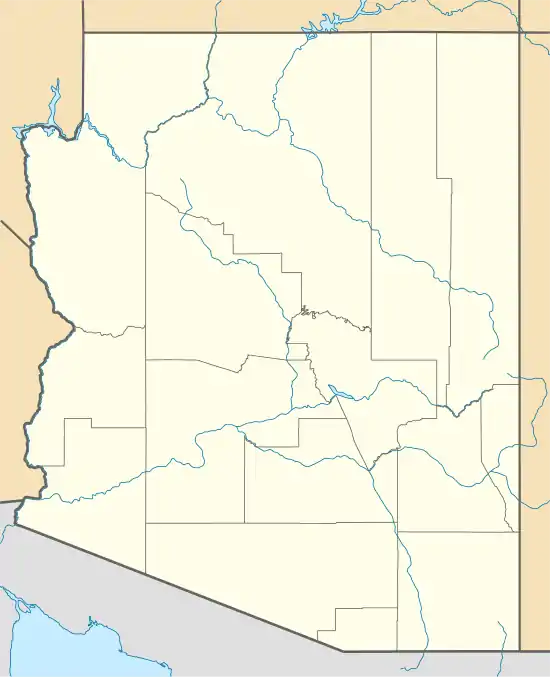Double Adobe Site
The Double Adobe Site is an archaeological site in southern Arizona, twelve miles northwest of Douglas in the Whitewater Draw area. In October 1926, just three months after the first human artifact was uncovered at the Folsom Site, Byron Cummings, first Head of the Archaeology Department at the University of Arizona, led four students to Whitewater Draw. Discovered by a schoolboy, the Double Adobe site contained the skull of a mammoth overlying a sand layer containing stone artifacts. One of these students was Emil Haury.[3]
Double Adobe Site | |
 | |
  | |
| Nearest city | Douglas, Arizona |
|---|---|
| Coordinates | 31°21′N 109°32′W |
| NRHP reference No. | 66000169 |
| Significant dates | |
| Added to NRHP | October 15, 1966[1] |
| Designated NHL | January 20, 1961[2] |
Later investigators found that the bones and artifacts were mixed by redeposited stream sediments, confusing the early interpretations. Fossil bones of mammoth, horse, bison, antelope, coyote and dire wolf were found associated with the artifacts, which included fire-cracked rock, projectile points, and small grinding stones.
The presence of grinding stones has been interpreted to mean that people were beginning to adapt to the changes brought by the end of the Ice Age and the extinction of many of the large mammals. The coming of the Holocene Era (10,000 years Before Present) brought warmer and drier conditions to the Southwest. As a result, by 11,000-10,500 BP the Clovis culture was beginning to give way to more regional variants, which are generally called the Archaic cultures.[4]
E. B. Sayles' and E. Antevs' 1941 definition of the Cochise culture (the name given to the southern Archaic tradition in the Southwest) was based upon excavations undertaken within the Double Adobe district. Many of the Southwest's most respected archaeologists have led investigations in the region over the years.[5] Double Adobe has yielded important information on southern Arizona's prehistoric climate, ecology, and animal life.[2]
The Double Adobe Site was declared a National Historic Landmark in 1961.[2]
References
- "National Register Information System". National Register of Historic Places. National Park Service. January 23, 2007.
- "Double Adobe Site". National Historic Landmark summary listing. National Park Service. Archived from the original on 2009-03-03. Retrieved 2007-09-27.
- Byron Cummings and Emil Haury at Double Adobe Archived 2009-05-24 at the Wayback Machine, University of Arizona
- "Double Adobe site". Archived from the original on 2008-01-01. Retrieved 2009-05-08.
- Double Adobe Site (scroll down) Archived July 18, 2011, at the Wayback Machine
External links
- Double Adobe Site (scroll down) at Center for Desert Archaeology
